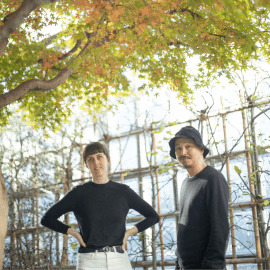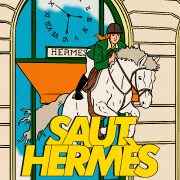Watch the video
SPECIAL CONTENTS
‘Botanical’ talk with
Azuma Makoto & Katie Scott
Collaborating under the ‘Botanical’ theme, illustrator Katie Scott recontextualises arrangements created by flower artist Azuma Makoto, giving them new dimension and life. In a talk on plants held at Ginza Maison Hermès, they share their respective thoughts on what went into their creations.

Gather widely.
Draw with curiosity.
Katie: We’ve worked together for 7 years, which is the same amount of time I’ve worked for Hermès and designed the scarf Carré. So coming together this many years later under the theme ‘Botanical’ seems kind of perfect for us, so I was very excited to get asked to do this and come here. What is it that you wanted to express with this theme?
Azuma: I’ve been working on flowers for Ginza Maison Hermès and Hermès events for more than 20 years, so I didn’t want to just create beautiful arrangements and for you to illustrate them; I also wanted us to convey things that I can’t express fully just by arranging them - things like their meaning, their inner qualities, and the diversity of flowers from different countries. I thought your illustrations could express these aspects more concretely.
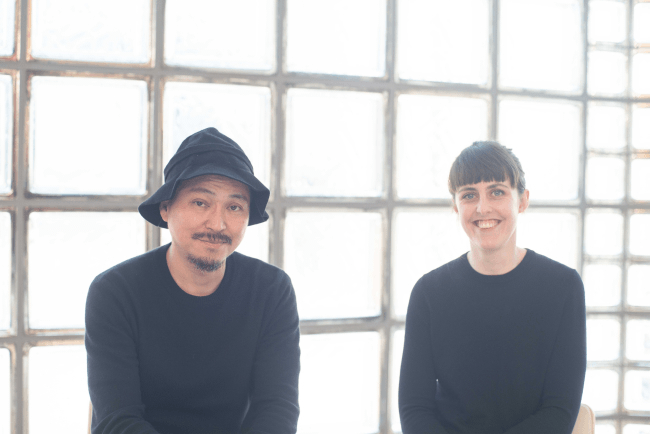
Katie: If you go to stores and look at all the scarves that are on sale today, they are all very Hermès, and they have this commonality of spirit. I think it’s a kind of curiosity or a kind of lightness. It’s almost like you have to see it, and then you know. For this project, I have a sense of curiosity about flowers. If we were to create something that was just beautiful flowers, it wouldn’t be so interesting, but it’s about showing something like the inside of the flowers or the interesting strangeness that makes it a good arrangement and a good drawing. Can you tell us about why you chose these particular flowers for the project together?
What they wanted to
express through their work.
Azuma: I wanted to choose a diverse variety of flowers and create a unified world through them. I tried to select just the right flowers from various ecosystems – from warm, cold, dry, and humid countries, and represent combinations of plant life that would never typically exist side by side.
For example, strelitzia and crocosmia from warmer regions, while opting for species such as the tiger lily and poppy from colder areas.
Katie: You didn’t just use flowers from different regions; there was such a diverse and interesting selection of flowers to choose from and different shapes, too. I also really like playing with the scale – making some of the flowers way bigger, making it more fantastical.
Azuma: Your illustrations of flowers are always like that. They aren’t just beautiful; they depict the strength and vulnerability of the flowers, not just their positive aspects but also the parts that people often don’t want to see, and I can relate to that.
Katie: I think that curiosity, even in the darkness or the strangeness of the flowers that, also speaks to the spirit of Hermès.
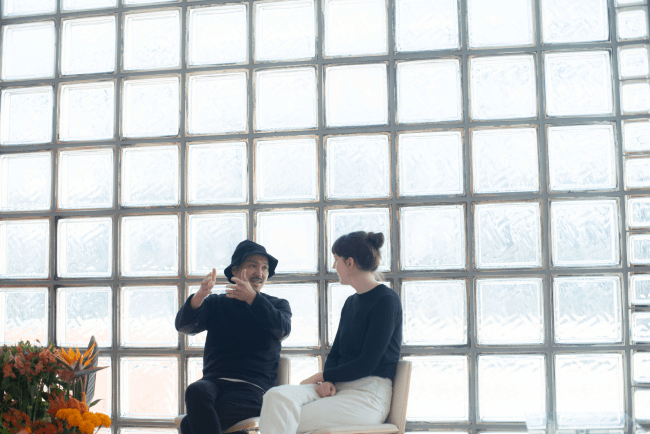
Azuma: Because of my work, I often spend time looking at plant encyclopedias, but for me, they’ve always been about looking into the past, but when I saw the one you’d illustrated, I felt a strong sense of the future. It felt like your way of thinking and your emotions were transferred into the drawings. The work we usually do together became a more singular piece this time, maybe a complete story within a single image.
Feelings in the Faubourg, Paris
and Ginza rooftop gardens.
Azuma: Have you ever visited the rooftop garden at the first store in Paris? How does the one here in Ginza compare?
Katie: I have been to the Paris rooftop with Yasmina, who’s the gardener there, and we spent an afternoon and she took me round explaining all the planting.
I don’t know if it’s this way every year, but when I went, it was all a white theme garden, which was really beautiful because suddenly you appreciate all the shades of green or all the textures of the plants because the colour palette is really reduced. In Ginza, unlike Paris, things like the fruit really stand out because the design of it is very manicured and you notice these beautiful little moments of colour. The glass architecture makes it feel not like a greenhouse, but a space to bring in the light, like an open garden.
Azuma: It’s interesting that in the same way as Paris is planted with apple trees, Ginza has mandarin, lemon, and apple trees. It’s not just about the flowers blooming but also the idea of them bearing fruit and sharing it with everyone. It’s not just a garden to look at; there’s a story behind it, which feels very Hermès-like. Even in a single garden, there’s a philosophy, I think.
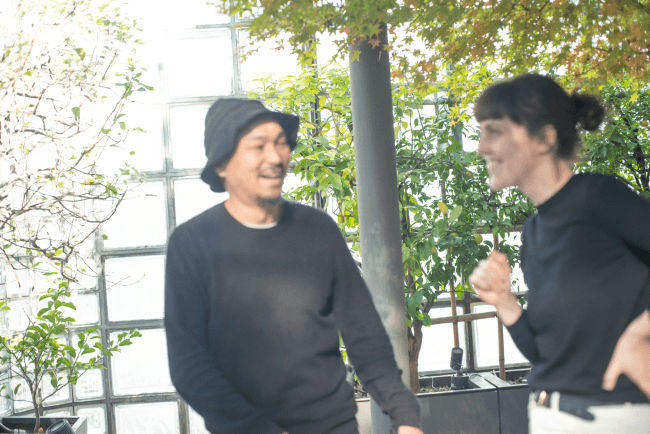
Katie: Nobody would think there are lively apple and mandarin trees on rooftops in Paris or Tokyo’s city centre.
Azuma: Ginza is more like a miniature garden, rather than the richness of the plants and trees of Paris, with the sky reflecting in a water basin resembling a pond and a single symbolic maple tree reminding us of the seasons. I also like the way it contrasts nicely with Renzo Piano’s architecture.

Azuma Makoto
A flower artist running an haute couture flower shop called JARDINS des FLEURS in Minami-Aoyama. He holds solo exhibitions mainly overseas and launched an experimental botanical collective, “Azuma Makoto, Kaju Kenkyusho (AMKK)”. He has worked on plant-themed decorations for Hermès and window displays at the Ginza Maison Hermès.
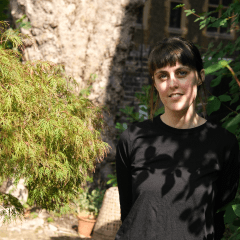
Katie Scott
Scott is a London-based illustrator who combines fine-line art (hand-drawn line illustration) and digital watercolour to produce works that draw inspiration from botanical anatomy. She has collaborated with botanists to create illustrated botanical reference books. Scott is known for her botanical designs for Hermès carrés and textiles.





